Discover 11 hidden attractions, cool sights, and unusual things to do in Arkadelphia (United States). Don't miss out on these must-see attractions: Arkadelphia Confederate Monument, Rose Hill Cemetery, and Clark County Courthouse. Also, be sure to include Ouachita River Bridge in your itinerary.
Below, you can find the list of the most amazing places you should visit in Arkadelphia (Arkansas).
Table of Contents
Arkadelphia Confederate Monument
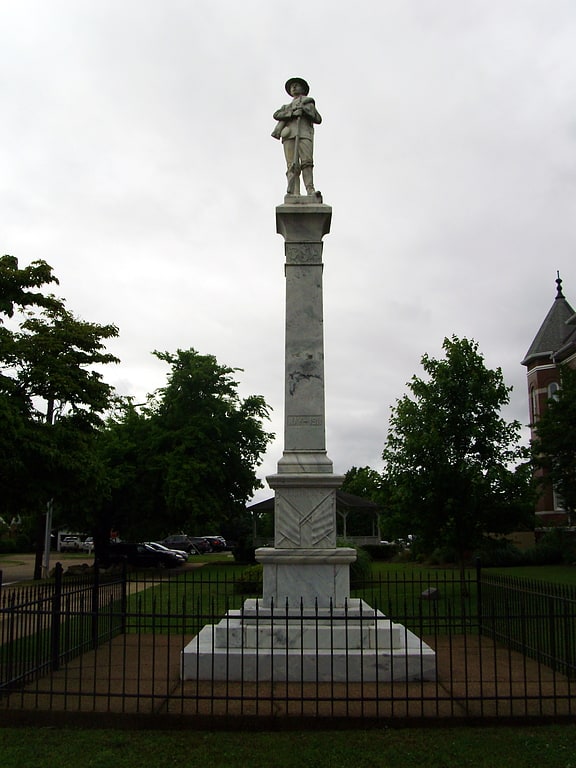
The Arkadelphia Confederate Monument is located on the grounds of the Clark County Courthouse in Arkadelphia, Arkansas. The sculpture, which depicts a Confederate Army soldier, was carved from Italian marble, and is mounted on a base of Georgia marble. It was designed and executed by R. P. Phillips in 1911, with funding from the local chapter of the United Daughters of the Confederacy.
The monument was listed on the National Register of Historic Places in 1996.[1]
Rose Hill Cemetery
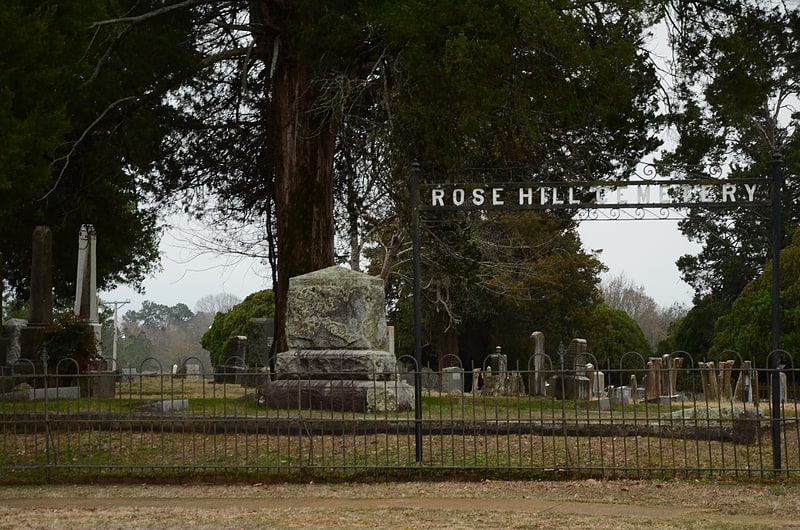
Cemetery in Arkadelphia, Arkansas. Rose Hill Cemetery is the second oldest cemetery in Arkadelphia, Arkansas. The cemetery, whose entrance is located on the 1200 block of Main Street, is 12 acres in size, with more than 2,000 burials.[2]
Clark County Courthouse
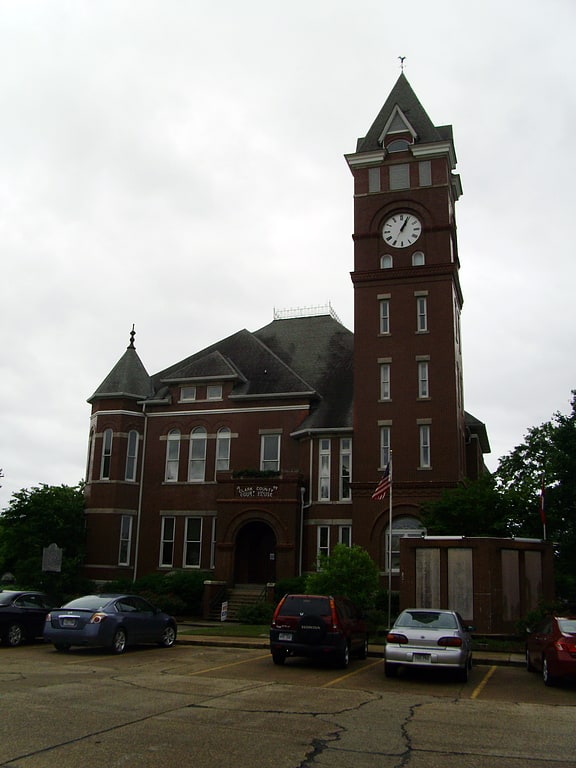
Courthouse. The Clark County Courthouse is located at Courthouse Square in Arkadelphia, Arkansas, the seat of Clark County. It is a 2+1⁄2-story Romanesque stone structure which was designed by Charles Thompson and completed in 1899. It is a basically rectangular structure with a hip roof, and a six-story tower rising from the northwest corner. It has a hip roof from which numerous hipped gables project, and there are corner turrets with conical roofs. It is the county's second courthouse.
The building was listed on the National Register of Historic Places in 1978.[3]
Ouachita River Bridge
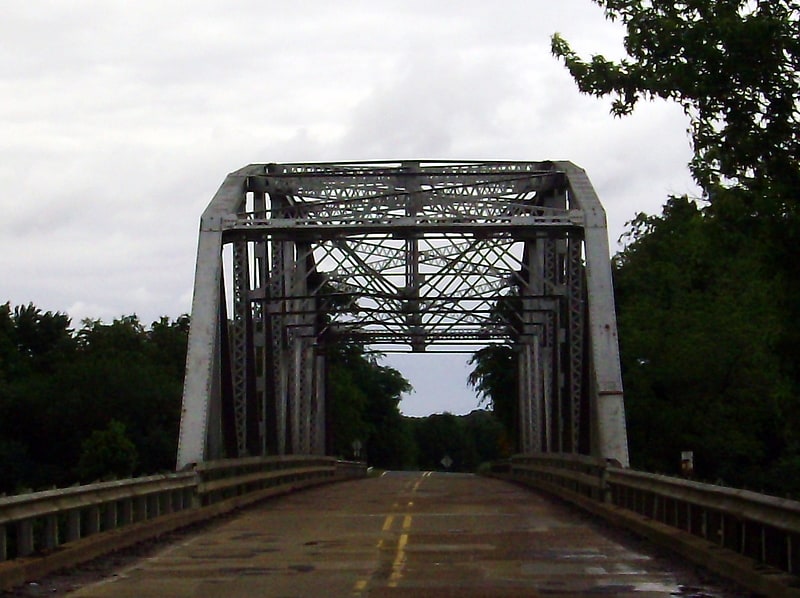
Truss bridge in Arkadelphia. The Ouachita River Bridge is a steel Parker through truss bridge carrying Arkansas Highway 7 and Arkansas Highway 51 across the Ouachita River at Arkadelphia, Arkansas. The trusses of the bridge were manufactured in 1933 by the Luten Bridge Company, and were first used to carry Highways 7 and US 67 over the Caddo River. That bridge was disassembled in the 1950s, and the trusses were stored until used to build this bridge in 1960. The main trusses span 202 feet, while the approaches combined measure 301 feet, giving the bridge a total length of 503 feet. The deck is concrete laid on steel girders and is 24 feet wide. It is one of two crossings of the Ouachita River in Clark County.
The bridge was listed on the National Register of Historic Places in 2006. It is scheduled to be replaced in late 2018.[4]
Clark County Library
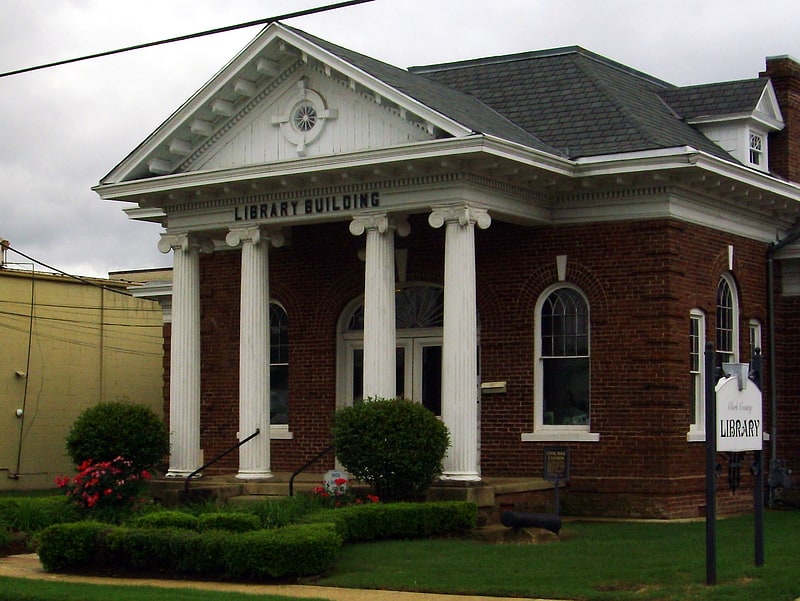
Public library in Arkadelphia, Arkansas. The Clark County Library is located at 609 Caddo St. in Arkadelphia, Arkansas. It is located in a Classical Revival single-story brick building designed by Charles L. Thompson, a noted Little Rock architect, and built in 1903. It is one of the oldest institutional library buildings in Arkansas. It was built by the local Women's Library Association, and transferred to county control in 1974.
The building was listed on the U.S. National Register of Historic Places in 1974.[5]
Address: 609 Caddo St, Arkadelphia
Habicht-Cohn-Crow House
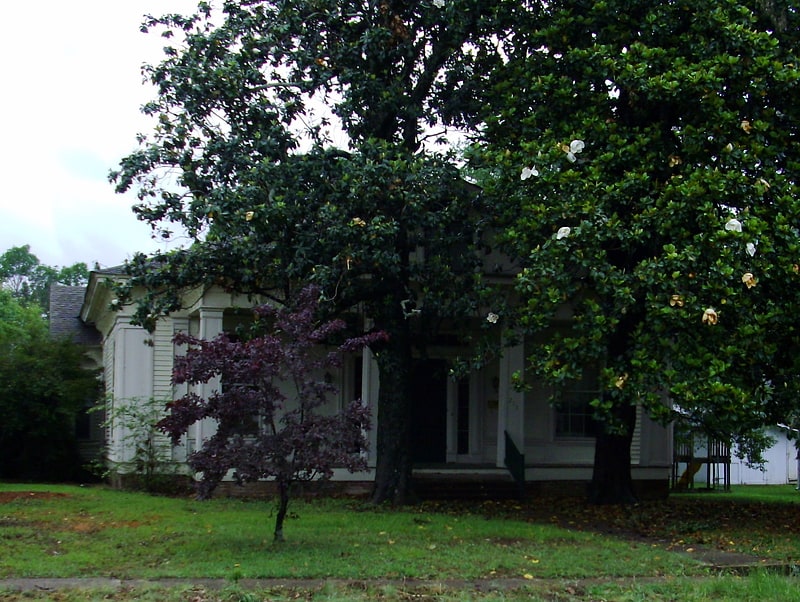
The Habicht-Cohn-Crow House is a historic house at 8th and Pine in Arkadelphia, Arkansas. The single-story Greek Revival house was built in 1870 for Captain Anthony Habicht. Habicht sold the house in 1875 to M. M. Cohn, the founder of the regional MM Cohn department store chain. Cohn sold it five years later to A. M. Crow, a local land agent for the railroad.
The house was listed on the National Register of Historic Places in 1985.[6]
Arkadelphia Boy Scout Hut
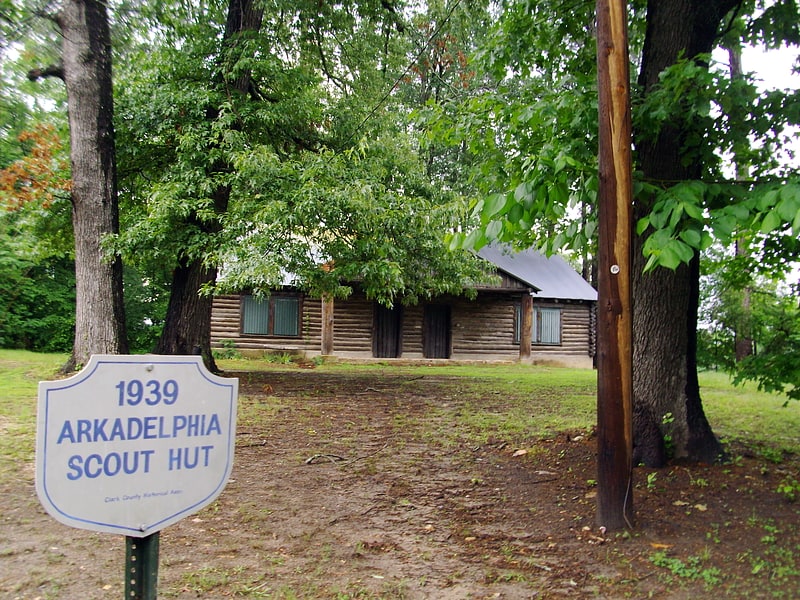
The Arkadelphia Boy Scout Hut, located in Central Park in Arkadelphia, Arkansas is on the National Register of Historic Places. Since the roof and the original shutters and windows were replaced in 1953, in the Hut is precluded from being listed on the National Register under Criterion C. However, it listed under Criterion A as a "property that made a contribution to the major pattern of American history".
The Boy Scout Hut was constructed from 1938 to 1939 as a National Youth Administration (NYA) project. It is an example of the typical type of buildings constructed by the New Deal's Works Progress Administration (WPA), Civilian Conservation Corps (CCC) and NYA during the Great Depression. However, it is the only known building constructed by the NYA and the only building designed in a Rustic style that remains standing in Arkadelphia that was designed and constructed during the New Deal era.
While the Boy Scout Hut was constructed specifically as a meeting place for two local Boy Scout troops, and its use is controlled by the Boy Scouts, the building is actually owned by the city of Arkadelphia. Starting around 1958, the Boy Scouts allowed the local Girl Scout troops to use the building and currently Cub Scout Pack 3024 and Girl Scout Troop 454 use the building.[7]
Nannie Gresham Biscoe House
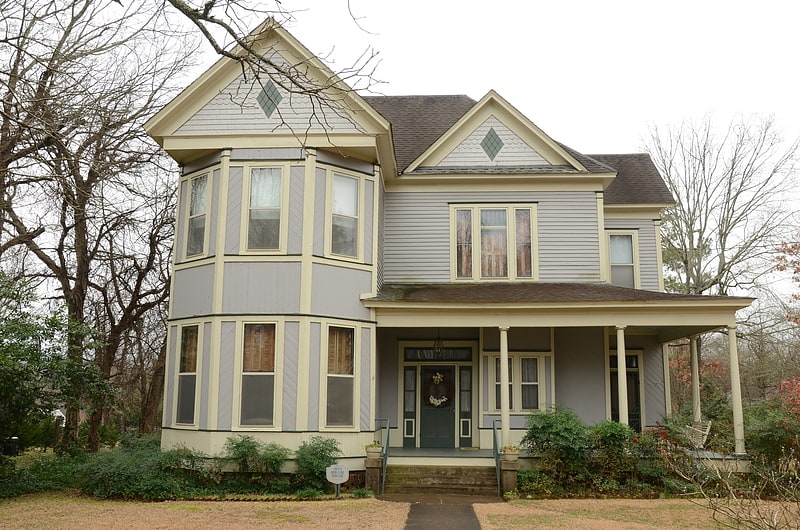
The Nannie Gresham Biscoe House is a historic house located at 227 Cherry Street in Arkadelphia, Arkansas.[8]
Capt. Charles C. Henderson House
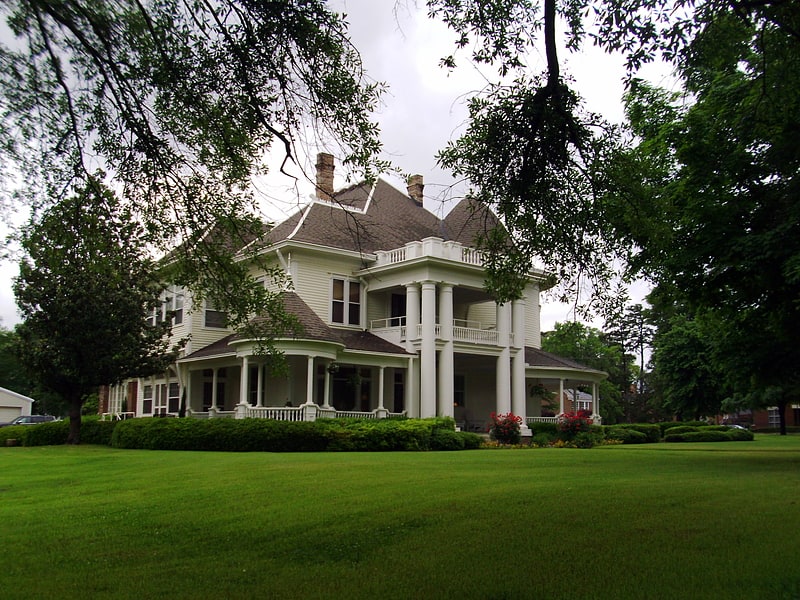
The Capt. Charles C. Henderson House is a historic house at Henderson and 10th Streets in Arkadelphia, Arkansas. Built in 1906 and significantly altered in 1918–20, it is the largest and most elaborate house of that period on 10th Street. When first built, it was a 2+1⁄2-story hip-roofed Queen Anne style house with some Classical Revival elements. Its most prominent feature from this period is the turret with elaborate finial. In 1918-20 Henderson significantly modified the house, added the boxy two-story Craftsman-style porch. The house is now on the campus of Henderson State University.
The house was listed on the National Register of Historic Places in 1998.[9]
Flanagin Law Office
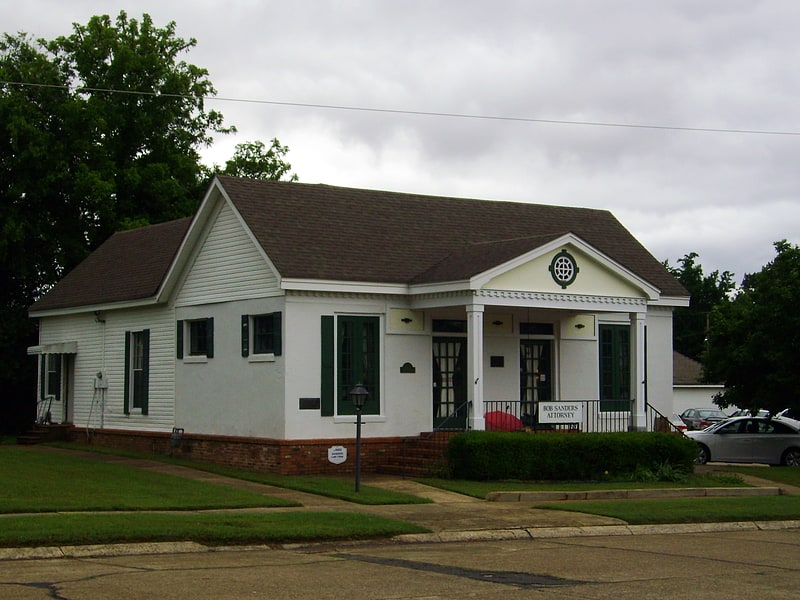
The Flanagin Law Office is a historic office building at 320 Clay Street in Arkadelphia, Arkansas. The front brick portion of the building was built in 1858 for J. L. Witherspoon, a local attorney, who later became Attorney General of Arkansas and sat on the state's high court. Witherspoon took on Harris Flanagin as a partner; Flanagin served as Governor of Arkansas during the American Civil War, and used this building as a law office for many years. Flanagin's son had the wood-frame rear section added, converting the building into a residence. It has since been converted back to a law office.
The building was listed on the National Register of Historic Places in 1977.[10]
James E. M. Barkman House
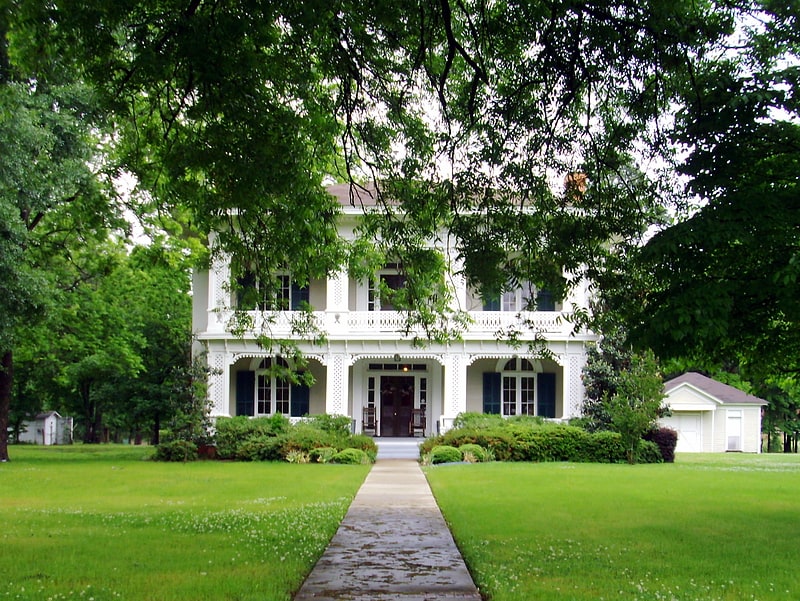
The James E. M. Barkman House is a historic house located at 406 North 10th Street in Arkadelphia, Arkansas.[11]